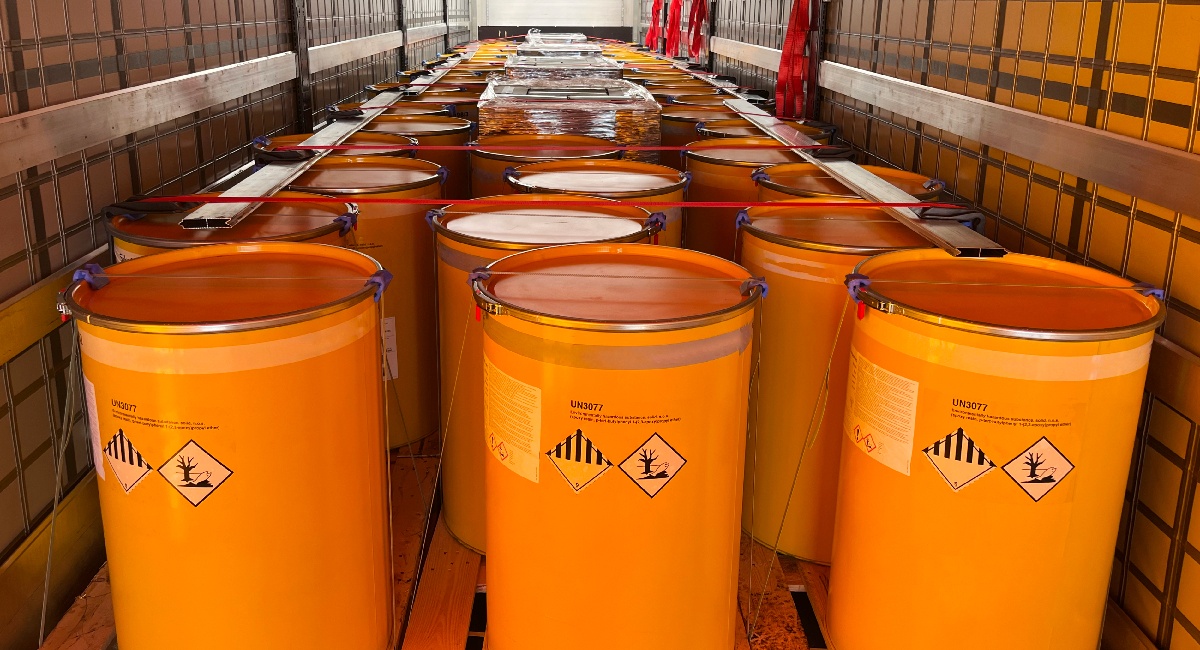2025 marks an important turning point for the transport of dangerous goods thanks to the update of the ADR regulation. This discipline, which regulates the road transport of hazardous substances, has been revised to ensure greater safety, uniformity, and sustainability. Among the main updates, 11 new UN numbers have been introduced, enriching the list of substances subject to regulation and adapting to technological and scientific advances in the sector.
In particular, one of the most significant updates is the inclusion of sodium-ion batteries as a new category of dangerous goods. The new dedicated UN numbers include:
- UN 3551: Sodium-ion batteries.
- UN 3552: Sodium-ion batteries contained in equipment or packed with equipment.
- UN 3558: Vehicles powered by sodium-ion batteries.
This change highlights the commitment to adapting the regulation to technological innovations while ensuring safety. According to UNECE, other significant changes include the elimination of special provision 653 and the introduction of specific rules for asbestos-containing waste, which now require safer packaging for transport.
What is the ADR regulation, and when does it apply?
The ADR regulation, short for “Agreement concerning the international carriage of Dangerous goods by Road,” is a set of rules established to ensure that the transport of such goods occurs under maximum safety conditions. First signed in 1957 and subject to biennial revisions, it applies to all signatory countries, covering both international and national transport.
In short, this regulation applies whenever substances classified as hazardous to health, the environment, or safety are transported. The obligations concern both carriers and companies that produce, ship, or receive these goods. Although the regulation primarily focuses on road transport, it is coordinated with other regulations concerning maritime and air transport.
What are the products under ADR?
The ADR regulation classifies dangerous goods based on their nature and the type of risk they pose. These categories include explosives, compressed gases, flammable liquids, solids prone to spontaneous combustion, and many others. For instance, flammable liquids include gasoline, alcohol, and solvents, while regulated gases include LPG and oxygen. The 2025 update has added 11 new UN numbers, further expanding the regulation’s coverage to adapt to new substances identified as hazardous.
Another significant update concerns lithium batteries, for which a charge level not exceeding 30% during transport has been recommended. While not mandatory in 2025, this measure could become binding from 2026. Additionally, the new rules introduced for sodium-ion batteries demonstrate the intention to include emerging technologies in the regulation.
When is ADR not required? How many kg can be transported without ADR?
The regulation provides some exemptions depending on the type of substance transported, the quantity, and the type of packaging. For example, small quantity transports can be exempted from full ADR obligations, provided that each package complies with specific limits defined in the regulation. In other words, for limited quantities or certain categories of goods, it is not necessary to apply all the prescribed safety measures.
In terms of quantity, up to 333 kg or liters of certain materials can be transported without applying all the rules. This demonstrates that the regulation is designed to balance safety and operational practicality.
What is needed to transport ADR?
The transport of dangerous goods requires a series of documents, permits, and specific skills. Among the main requirements are the ADR license for drivers, transport documentation with UN numbers and class codes, and a vehicle approval certificate. Moreover, vehicles must be equipped with mandatory tools such as fire extinguishers, orange panels, and emergency kits.
Similarly, companies that regularly handle dangerous goods must employ an ADR consultant, a mandatory figure to ensure compliance with regulations and safety in operations. This highlights the importance of a professional and organized approach to managing such transports.
What does ADR packaging mean?
ADR packaging is designed to safely contain dangerous goods during transport. It must comply with strict international standards and pass tests for resistance to shocks, leaks, and pressures. For example, the materials used, such as plastic or metal, must be certified according to UN standards and ensure airtight closure to prevent leaks.
Additionally, each package must bear clear labeling with the UN number, hazard class, and risk symbols. This system ensures complete traceability and allows all operators to quickly identify the characteristics of the goods.
In conclusion, the ADR 2025 regulation represents a significant step forward for the safe transport of dangerous goods. With new rules and updates, such as those concerning sodium-ion batteries and provisions for asbestos-containing waste, the logistics sector can face current challenges with more effective tools and procedures.
If you need further details or support for your ADR shipments, do not hesitate to contact us. Partnering with CTI means relying on an experienced freight forwarder who skillfully navigates the numerous regulations governing this sector. We are ready to provide you with comprehensive assistance for your logistics needs!










